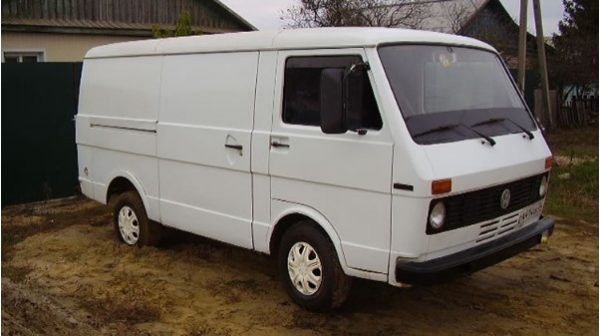The Volkswagen LT series, encompassing models like the 28, 31, 35, 40, and 45, represents a robust and versatile workhorse, often found hauling cargo, transporting passengers, or even converted into campervans. While these vans are known for their reliability, regular maintenance and occasional repairs are inevitable. This article provides a comprehensive guide for the DIY enthusiast, equipping you with the knowledge and tools to keep your LT running smoothly and efficiently.

Understanding Your LT: Models and Common Issues
Before diving into the specifics, it’s crucial to understand the nuances of your particular LT model. The LT series spanned several generations, each with its own engine options, drivetrain configurations, and potential problem areas. Common engines include the diesel-powered 2.4-liter and 2.5-liter units, as well as the gasoline-powered options.
Typical issues encountered by LT owners include:
- Engine Problems: Diesel engines may suffer from injector issues, fuel pump failures, or oil leaks. Gasoline engines can experience ignition problems, carburetor malfunctions (on older models), or cooling system issues.
- Transmission Troubles: Gearbox wear and tear, clutch problems, and difficulty shifting gears are common complaints.
- Brake System Failures: Brake pad and rotor wear, brake line corrosion, and master cylinder problems are frequently reported.
- Suspension and Steering Issues: Worn shocks and struts, ball joint failures, and steering rack problems can affect handling and ride quality.
- Bodywork Corrosion: Rust is a significant enemy of the LT, particularly in areas like the wheel arches, sills, and undercarriage.
Essential Tools and Equipment
Embarking on DIY repairs requires a well-equipped workshop. Here’s a list of essential tools:
- Basic Hand Tools: Wrenches (metric), sockets (metric), screwdrivers (Phillips and flathead), pliers, adjustable wrench.
- Specialized Tools: Torque wrench, wheel bearing puller, ball joint separator, brake caliper tool, multimeter.
- Diagnostic Tools: A basic OBD-II scanner (for later models with electronic fuel injection) can help diagnose engine problems.
- Lifting Equipment: A sturdy jack and jack stands are crucial for safely lifting and supporting the vehicle. A ramp can be helpful for certain tasks.
- Safety Gear: Safety glasses, gloves, and appropriate clothing are essential for protecting yourself.
Regular Maintenance: The Key to Longevity
Preventative maintenance is the cornerstone of keeping your LT in top condition. Follow these guidelines:
- Oil and Filter Changes: Change the engine oil and filter at the manufacturer’s recommended intervals (typically every 5,000-10,000 miles, or as specified in your owner’s manual). Use the correct oil type and viscosity for your engine.
- Air Filter Replacement: Replace the air filter regularly to ensure optimal engine performance and fuel efficiency.
- Fuel Filter Replacement: Replace the fuel filter at the recommended intervals to prevent fuel system contamination.
- Coolant Flush and Replacement: Flush and replace the coolant every two to three years to prevent corrosion and overheating.
- Brake Inspection and Maintenance: Regularly inspect brake pads, rotors, and brake lines. Replace worn components as needed. Bleed the brakes to remove air from the system.
- Tire Rotation and Pressure Checks: Rotate your tires regularly to promote even wear. Check and maintain the correct tire pressure.
- Greasing and Lubrication: Lubricate moving parts, such as ball joints and suspension components, as needed.
Common Repairs: A DIY Approach
Many common repairs can be tackled at home with the right tools and knowledge. Here are a few examples:
- Brake Pad and Rotor Replacement: This is a relatively straightforward task that can save you a significant amount of money.
- Oil Leak Repair: Identifying and fixing oil leaks, such as those from valve cover gaskets or oil pan seals, can prevent engine damage.
- Cooling System Repairs: Replacing a faulty thermostat, water pump, or radiator can prevent overheating.
- Suspension Component Replacement: Replacing worn shocks, struts, or ball joints can improve ride quality and handling.
- Electrical Troubleshooting: Diagnosing and repairing electrical problems, such as faulty wiring or sensor failures, can be done with a multimeter and a wiring diagram.
Resources and Tips for Success
- Owner’s Manual: Your owner’s manual is your primary source of information. It contains valuable information about maintenance schedules, specifications, and troubleshooting tips.
- Repair Manual: Invest in a comprehensive repair manual, such as a Haynes or Chilton manual, specific to your LT model. These manuals provide detailed instructions, diagrams, and step-by-step procedures for various repairs.
- Online Forums and Communities: Online forums and communities dedicated to the Volkswagen LT are invaluable resources. You can find answers to your questions, share experiences, and learn from other owners.
- Take Your Time: Don’t rush the process. Take your time, double-check your work, and follow the instructions carefully.
- Safety First: Always prioritize safety. Disconnect the battery before working on electrical components. Use jack stands to support the vehicle. Wear safety glasses and gloves.
- Don’t Be Afraid to Ask for Help: If you’re unsure about a particular repair, don’t hesitate to seek help from a qualified mechanic or experienced DIYer.
By embracing a DIY approach to maintenance and repair, you can not only save money but also gain a deeper understanding of your Volkswagen LT, ensuring its longevity and reliability for years to come. Happy wrenching!
See step-by-step procedures: https://www.vwmanual.ru/en/rest/lt-28


